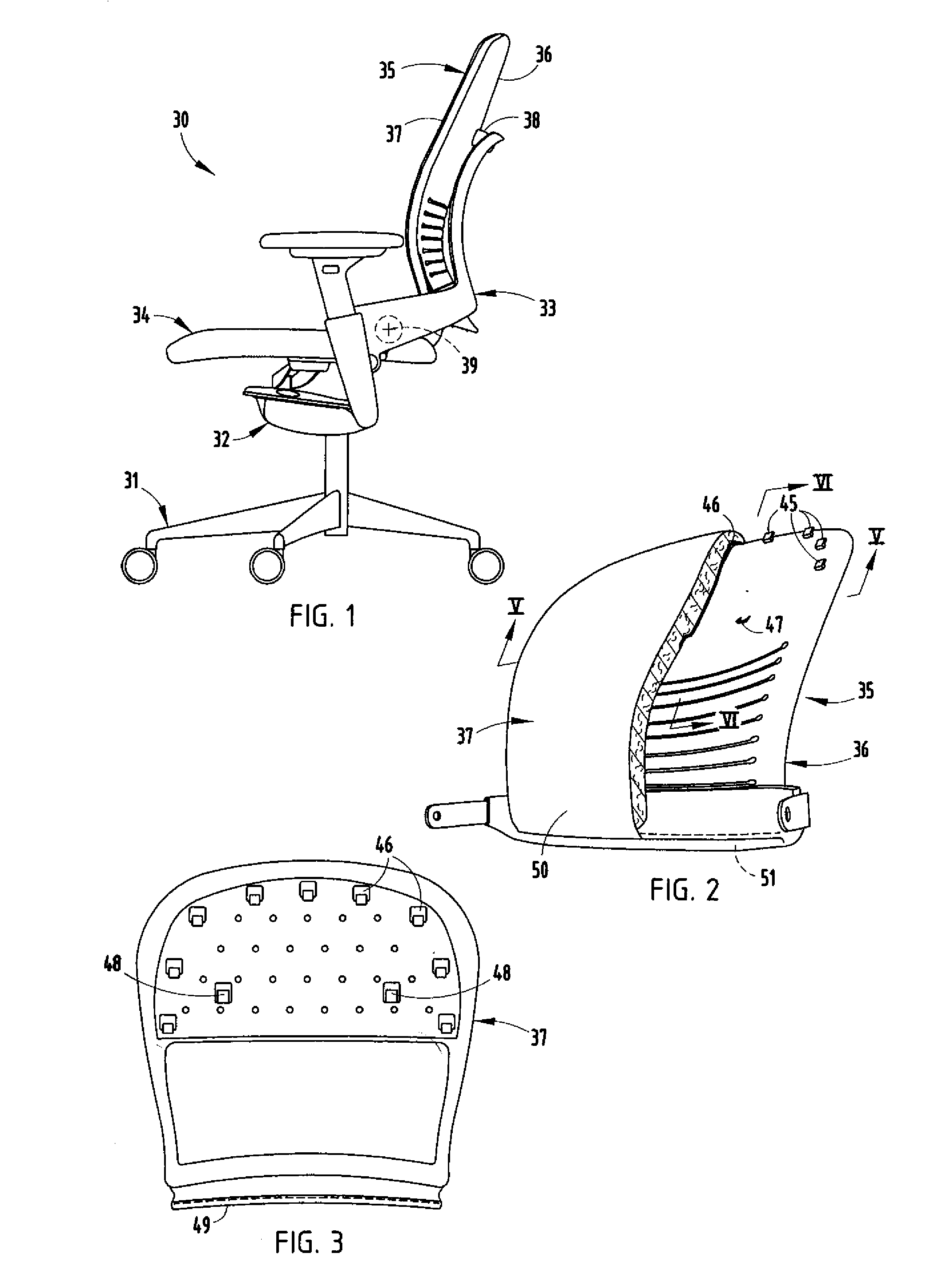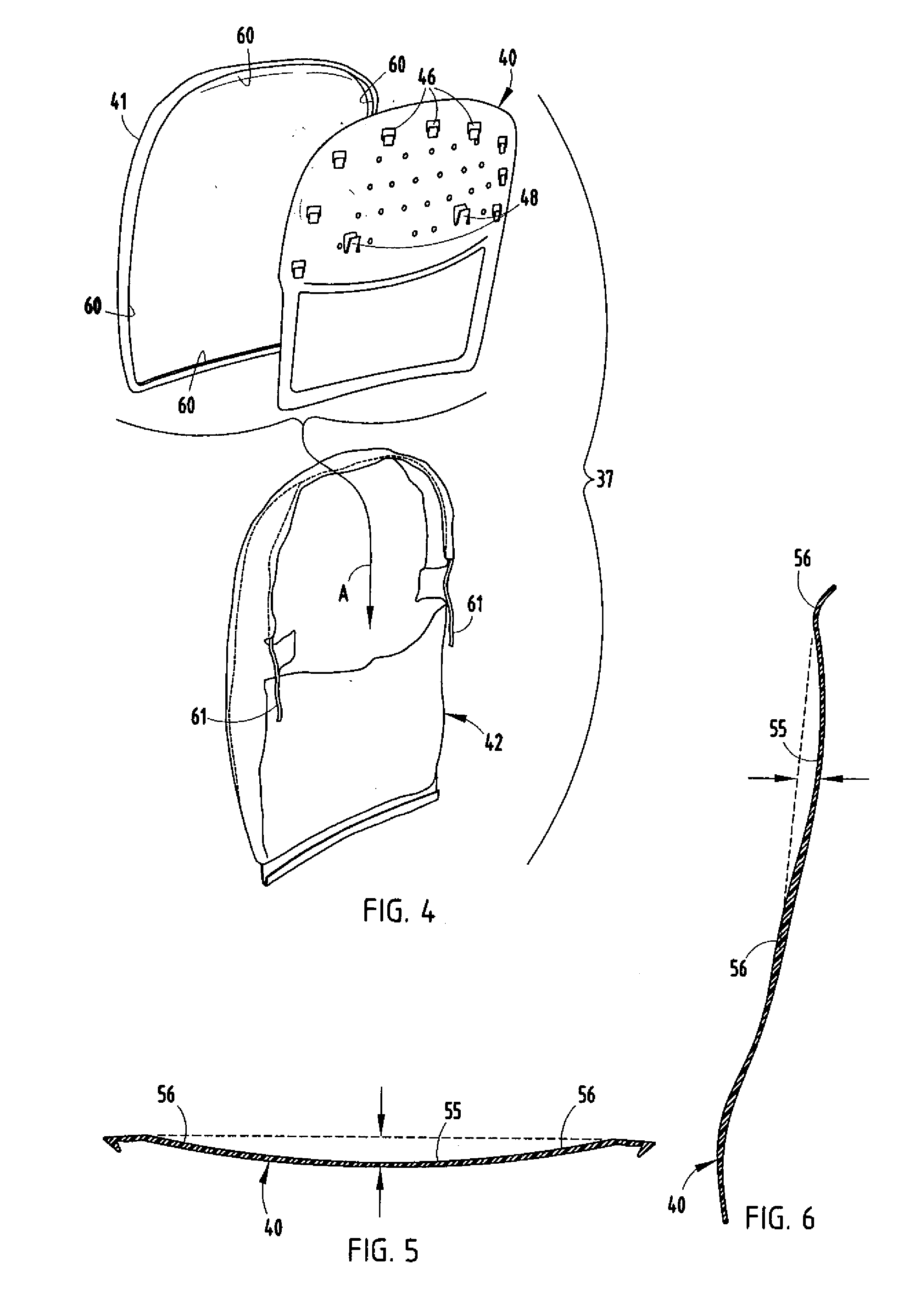Seating unit with formed cushion, and manufacturing method
a seating unit and cushion technology, applied in the field of seating units, can solve the problems of affecting the quality of the seat cushion, the cushion is often distorted, and the upholstery is not uniform after assembly, so as to reduce the distortion and objectionable wrinkles, minimize the balance tension, and minimize the effect of tension
- Summary
- Abstract
- Description
- Claims
- Application Information
AI Technical Summary
Benefits of technology
Problems solved by technology
Method used
Image
Examples
Embodiment Construction
[0026]A seating unit 30 (FIG. 1) includes a base 31, an underseat control 32, a back frame 33 operably supported in the base 31, and a seat 34 operably supported at its front on the base 31 and at its rear on the back frame 33 for synchronous movement of the seat 34 upon recline of the back frame 33. A back assembly 35 is supported on the back frame 33, and includes a back support 36 (also sometimes called a back “shell” or “support panel”) and a cushion subassembly 37 on the back support 36. The back support 36 is operably supported on the back frame33 at top and bottom pivots 38 and 39 (FIGS. 1-2) and is flexible in its lumbar region and forwardly biased, such that it provides a seated user with exceptional comfort and ergonomic support, especially to the user's lower back. The reader is referred to Knoblock U.S. Pat. No. 5,975,634 and Peterson U.S. Pat. No. 6,425,637 if additional information is desired about the interaction and cooperation of these types of components in support...
PUM
| Property | Measurement | Unit |
|---|---|---|
| polymeric | aaaaa | aaaaa |
| thickness | aaaaa | aaaaa |
| thick | aaaaa | aaaaa |
Abstract
Description
Claims
Application Information
 Login to View More
Login to View More - R&D
- Intellectual Property
- Life Sciences
- Materials
- Tech Scout
- Unparalleled Data Quality
- Higher Quality Content
- 60% Fewer Hallucinations
Browse by: Latest US Patents, China's latest patents, Technical Efficacy Thesaurus, Application Domain, Technology Topic, Popular Technical Reports.
© 2025 PatSnap. All rights reserved.Legal|Privacy policy|Modern Slavery Act Transparency Statement|Sitemap|About US| Contact US: help@patsnap.com



